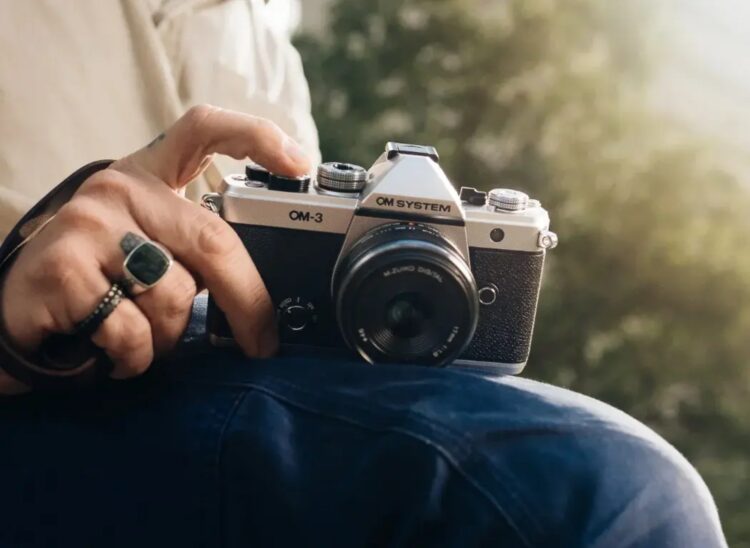OM Digital Solutions has officially announced the OM System OM-3, a camera that merges vintage aesthetics with cutting-edge performance. Inspired by the classic Olympus OM-1 film camera from the 1970s, the OM-3 combines its nostalgic design with the advanced capabilities of the OM System OM-1 Mark II Micro Four Thirds mirrorless camera.
The camera sports a classic, all-metal top plate adorned with four physical dials, including controls for stills and video mode selection, a mode dial, and two command dials. There’s also a Color Profile control dial, which allows photographers to customise colour and monochrome profiles with precise adjustments to colour saturation, highlight and shadow control, and various film-like effects, including grain and toning options.
The OM-3 measures 139.3mm in width, 88.9mm in height and 45.8mm in thickness, making it slightly wider but thinner than the OM-1 Mark II. It is also lighter, weighing 496g with a battery and memory card inserted, compared to the 599g of the OM-1 Mark II.

The camera features a 20.37MP stacked BSI Live MOS sensor paired with a TruePic X image processor, enabling high-speed performance with burst shooting up to 120 frames per second (fps) with locked focus and 50 fps with continuous autofocus when using compatible lenses. Additionally, it boasts a 1,053-point cross-type phase-detect autofocus system and Pro Capture Mode, capable of pre-capturing up to 70 frames.
The OM-3 also features computational photography capabilities, including High-Res Shot mode (80MP for tripod use and 50MP handheld), Live ND, Live GND, HDR, Focus Stacking, and Multi Exposure. These functions are accessible via a dedicated Computational Photography (CP) button and an associated control dial.
Its in-body image stabilisation system offers 6.5 stops of compensation, slightly less than the 8.0 stops of the OM-1 Mark II. On the video front, the OM-3 supports C4K at up to 60p, external RAW recording, and new OM Cinema 1 and OM Cinema 2 profiles, designed for a cinematic look without requiring post-processing.

While the OM-3 inherits many features from the OM-1 Mark II, some differences set the two models apart. The OM-3 has a single UHS-II SD card slot, whereas the OM-1 Mark II has dual slots. Another notable distinction is the electronic viewfinder (EVF)—the OM-3 has a 2.36 M-dot EVF with 1.23 to 1.37x magnification, compared to the OM-1 Mark II’s larger and higher-resolution 5.76 M-dot EVF with 1.48 to 1.65x magnification.
The OM System OM-3 will be available in Malaysia starting March, with pre-orders currently open through authorised OM System retailers, including YL Camera and Altech Camera. The body-only version is priced at RM8,999, while a bundle with the M.Zuiko Digital ED 12-45mm f/4 Pro lens is available for RM10,299.
(Source: OM System Malaysia, via Facebook)
Follow us on Instagram, Facebook, Twitter or Telegram for more updates and breaking news.





